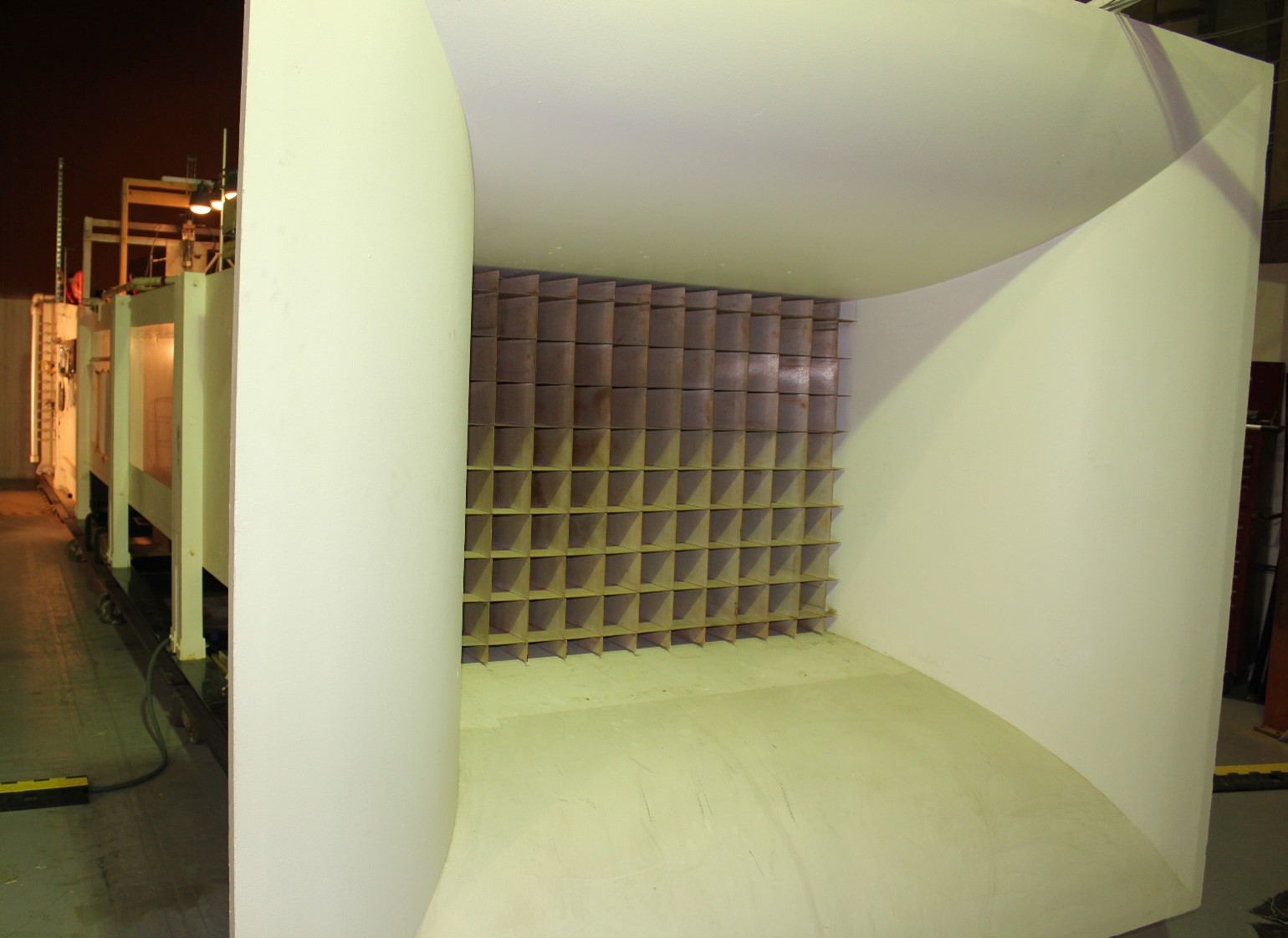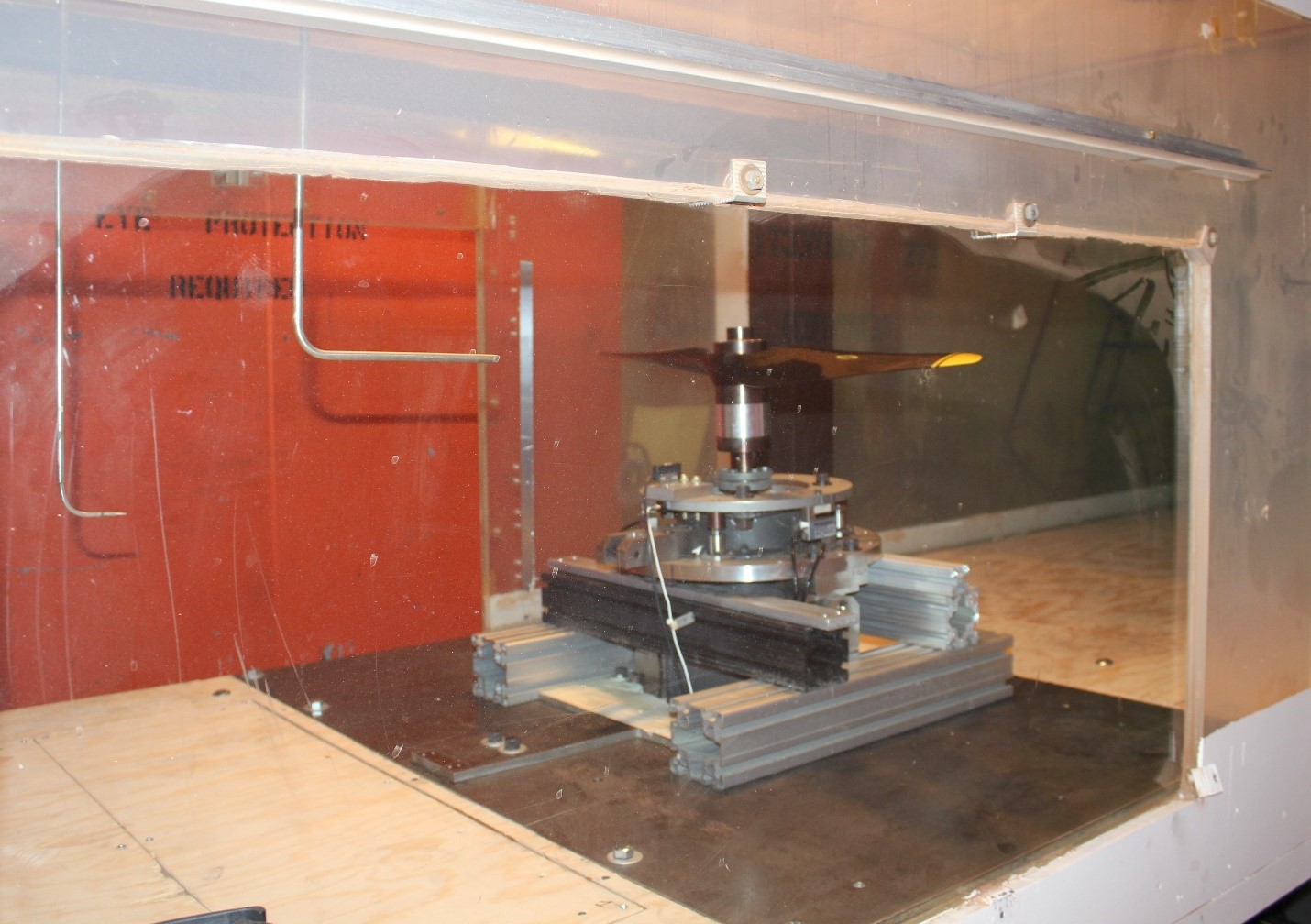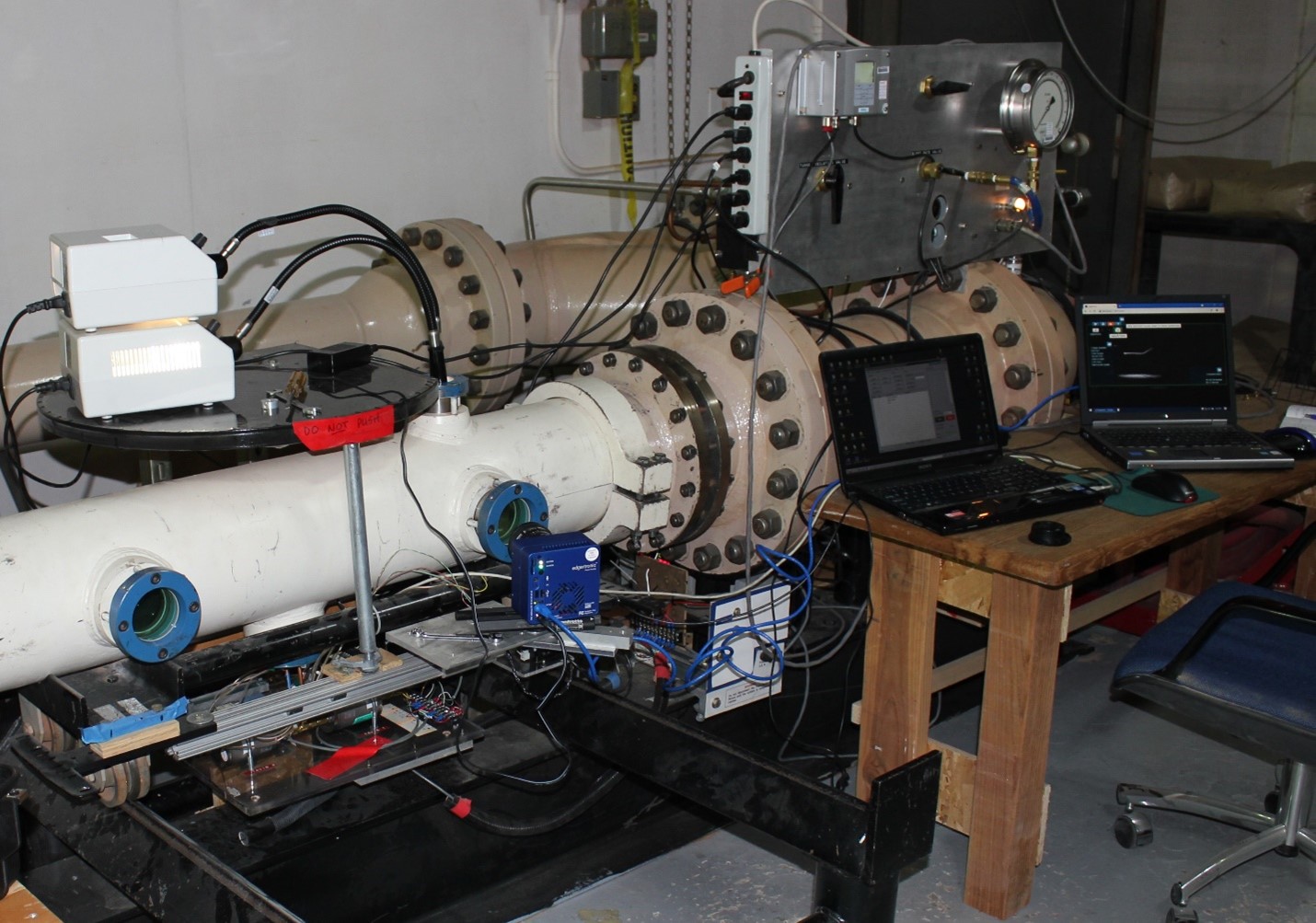NASA Ames Planetary Aeolian Laboratory
The Planetary Aeolian Laboratory (PAL) is a unique facility capable of supporting experiments under different planetary atmospheric environments, including Earth, Mars, and Saturn’s moon Titan.
Benefit
The Planetary Aeolian Laboratory (PAL) is a valuable tool for research projects that require adjustable atmospheric pressures (between 1 bar and 5 millibars) for experimentation. It is unique in that it is a very large non-cleanroom vacuum capable facility. As such, it is well suited for researchers that do not desire or require cleanroom conditions and need a large volume for their experimentation. The PAL hosts two wind tunnels, the Mars Wind Tunnel (MARSWIT) and the Titan Wind Tunnel (TWT, previously the Venus Wind Tunnel-VWT), and has generous floor space for non-wind tunnel experimentation. Aside from the aeolian research conducted in the wind tunnels, spacecraft components and instrumentation designed for Mars missions have been tested in the MARSWIT. Most recently, the low-pressure capability and large volume of the PAL vacuum tower has made it a primary choice for scaled Mars rotorcraft component testing.
It should be noted that the MARSWIT was used to simulate forward flight on another planet (Mars), a first. And it was also used to prove that waves could be generated in water by wind at atmospheric pressures under 40 millibars, another first.
Research Overview
For nearly 50 years, the PAL has conducted research on various aspects of planetary aeolian processes, including assessment of wind speeds needed to initiate the movement of particles on Earth, Mars, and Venus, rates of wind erosion, and analysis of various “bedforms” such as ripples. Researcher have used the results to interpret spacecraft data returned from orbit and the surfaces of Mars and Venus. Although the primary focus is on extraterrestrial processes, the results have application to understanding wind processes on Earth, including problems of desertification.
Located in Building N-242, the facility consists of the environmental test-chamber and a control room/office. The chamber has an inside height of 30 meters and an inside volume of 4000 cubic meters. The PAL draws its vacuum from the Thermophysics Facilities’ Steam Vacuum System and can be evacuated to 550 Pa in about 45 minutes. To help defray the cost of running the Steam Vacuum System an agreement was struck in which PAL draws its vacuum only as a “ride-along” with other facilities. The Martian Surface Wind Tunnel (MARSWIT) was put into operation in 1976. It is an open-circuit 1.3 by 1.3 by 13-meter atmospheric boundary-layer wind tunnel capable of simulating aeolian processes under both Martian and terrestrial conditions, operating at atmospheric pressures ranging from 1 atm to 500 Pa.
Research Overview
For the past thirty years research has been conducted on various aspects of planetary aeolian processes, including assessment of wind speeds needed to initiate the movement of particles on Earth, Mars, and Venus, rates of wind erosion, and analysis of various “bedforms” such as ripples. The results have been used to interpret spacecraft data returned from orbit and the surfaces of Mars and Venus. Although the primary focus is on extraterrestrial processes, the results also have application to understanding aeolian processes on Earth, including problems of desertification. Located in Building N-242, the facility consists of the environmental test-chamber and a control room/office. The chamber has an inside height of 30 meters and an inside volume of 4000 cubic meters. PAL draws its vacuum from the Thermal Physics Facilities’ Steam Vacuum System and can be evacuated to 5.5 millibar in about 45 minutes. To help defray the cost of running the Steam Vacuum System an agreement was struck in which PAL draws its vacuum only as a “ride-along” with other facilities. The Martian Surface Wind Tunnel (MARSWIT) was put into operation in 1976. It is an open-circuit 1.3 by 1.3 by 13 m atmospheric boundary-layer wind tunnel capable of simulating aeolian processes under both martian and terrestrial conditions, operating at atmospheric pressures ranging from 1 bar to 5.5 millibar.
MARSWIT offers the opportunity to investigate the physics of particle entrainment by the wind under terrestrial and Martian conditions, conduct flow-field modeling experiments to assess wind erosion and deposition on scales ranging from small rocks to landforms (scaled) such as craters, and to test spacecraft instruments and other components under Martian atmospheric conditions.
Differential pressure transducers and a differential capacitance manometer are used for measuring free-stream wind velocities and deriving wind profiles. These have a range of +/- 1.25 millibar. A Vaisala dewpoint and temperature transmitter is used to monitor the temperature and relative humidity within the chamber. A capacitance manometer is used for measuring Earth (1 bar), and Martian (~7 mbar) chamber pressures respectively.
The PAL is equipped with a high-speed (500k samples/s) analog-to-digital data acquisition system from National Instruments, Inc. Running on a PC, the system is capable of simultaneously measuring 64 analog channels, which can be independently accessed. The system is controlled by the National Instruments software package LabView. This system allows for realtime acquisition, analysis, and visualization of wind tunnel temperature, pressure, velocity, and electrometer probe data. Other analog and digital instruments can be incorporated for specific experiment requirements. Recent research work at the facility included research on the particle physics and geology of dust devils (coordinated with field studies of dust devils on Earth), analysis of the formation of wind-abraded rocks (ventifacts), and the development and testing of flight hardware for the Mars Science Laboratory (Curiosity rover) spacecraft on Mars.
Present work includes research that uses the Titan Wind Tunnel (TWT). The TWT has been used to investigate Aeolian processes on Titan. The first round of research involved determining boundary layer profiles, friction speeds, and threshold wind speeds for different types of materials. A second phase of research is anticipated to investigate the development of bed-forms.
The TWT is equipped with a custom designed pressure transducer, calibrated to a range of operating pressures, and sensitive to a differential pressure of 0.15 in. H2O. The differential pressure, tunnel pressure, and tunnel temperature data is delivered to a Measurement Computing I/O module (scan rate 1.2kS/s) and processed through InstaCal software on a Sony Vaio laptop computer.
Background
In the early 1970s, a series of simple wind tunnel experiments was conducted at NASA-Ames to gain insight into the nature of aeolian activity as a planetary process. Initial results were promising and provided clues into the nature of Mars wind streaks seen on Mariner 9 images. A successful proposal was submitted to NASA Headquarters to establish a facility capable of conducting experiments dealing with the physics and geology of Martian aeolian features and processes. In 1977 an agreement was reached among NASA Headquarters, Ames Research Center, and Arizona State University (ASU) that enabled continued operation of the facility through ASU. The Facility is currently administered by the NASA-Ames Thermophysics Facilities Branch and is operated by ASU personnel.
POC
Haley Cummings- ARC-CAL-PAL@mail.nasa.gov
Ken Smith
Mail Stop 242-6
P.O. Box 1
Moffett Field, CA 94035-0001
Voice 650.604.6427


























